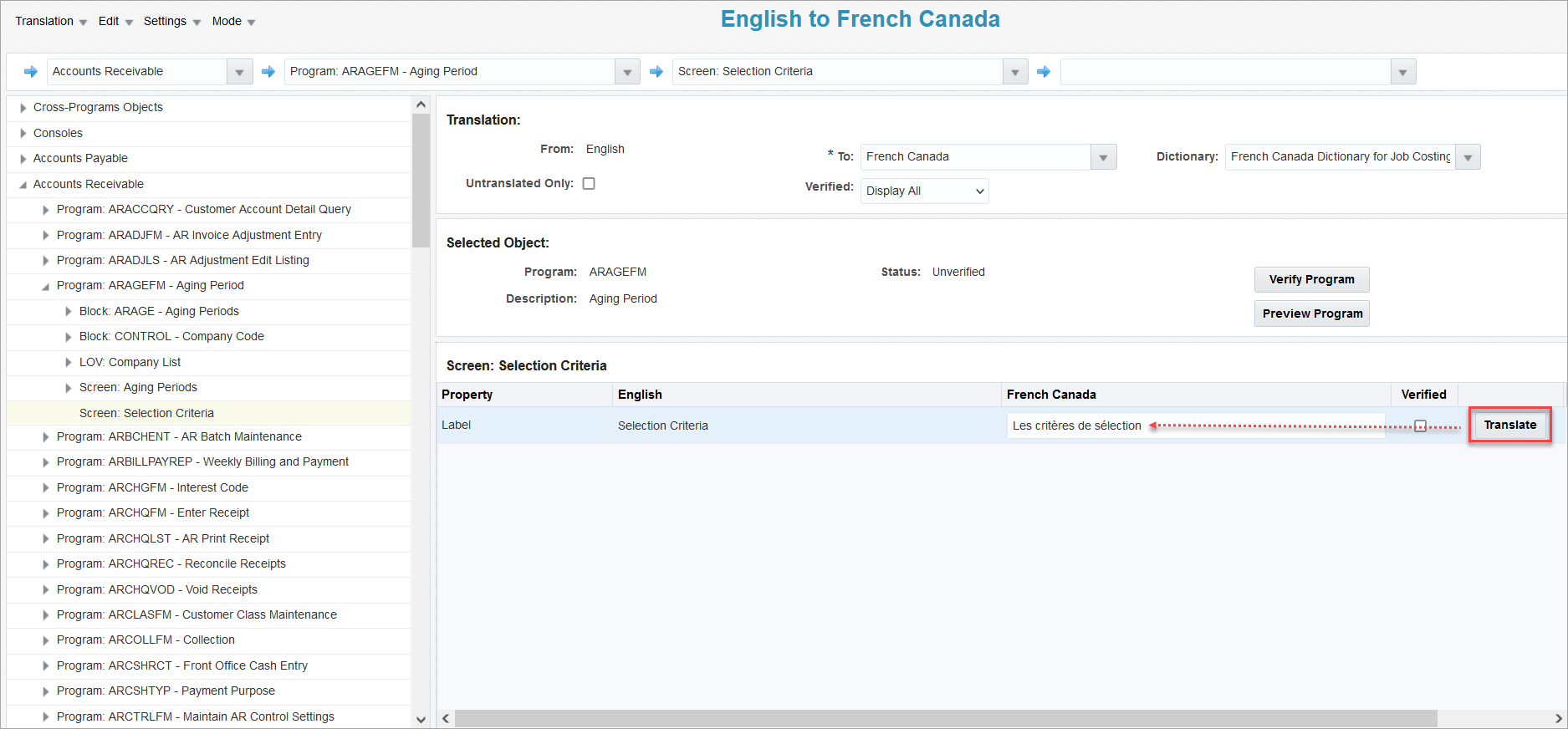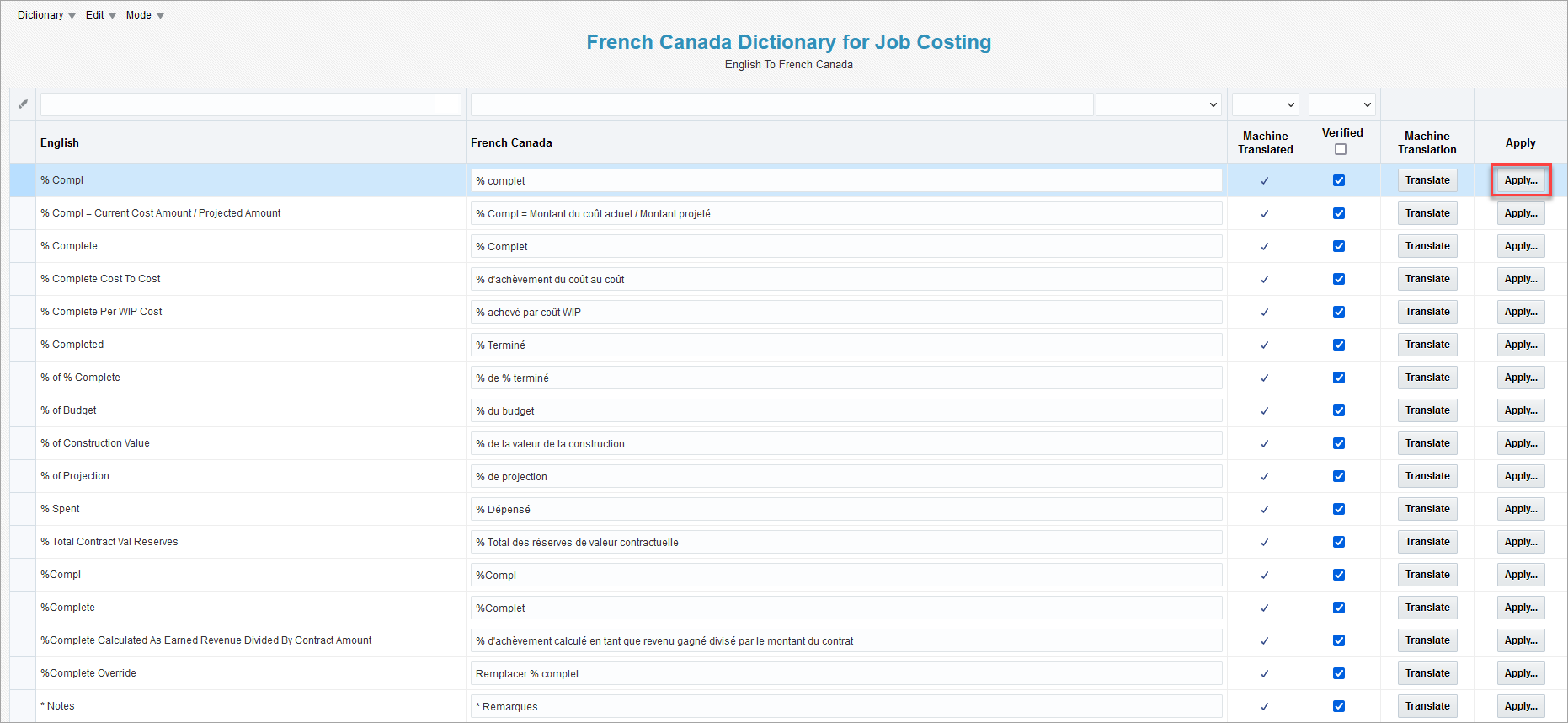Dictionaries can be created for country-specific variants to translate terms and apply it to specific applications, programs, processes, etc. The generated translations can then be adjusted and verified, and then installed to a selected environment in Program Mode.
Think about selecting a dictionary in Program Mode as selecting a dictionary book in real life. Different dictionary books (even for the same language) are used to translate a term. Depending on the dictionary editions and/or authors, there may be different translations for the same term.
Similarly in Dictionary Mode, if multiple dictionaries have been created for the same language (e.g. to use different translations for the same term in different applications), a specific dictionary can be picked and used for the translation of the program element properties in Program Mode.
For a general overview, please see Translation Manager - Dictionary Mode.
NOTE: The Dictionary functionality only translates objects available in Program Mode. Message Mode, Menu Mode, and JSP Mode information is not affected.
Creating a New Dictionary
-
Open the Translation Manager tool from the Launch page. By default, the tool will open in Program Mode.

-
On the top navigation menu, click on the Mode drop-down list and then select the "Dictionary Mode" option.
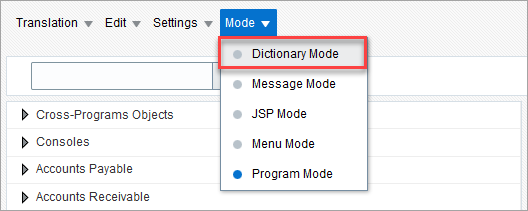
-
In Dictionary Mode, click on the Dictionary drop-down list and select the "New" option.

-
In the New Dictionary pop-up window, enter a dictionary name, select the country-specific variant to translate to, and select which applications, programs, and processes will be scanned to create the dictionary. Please see Creating a New Dictionary > Import Terms From – Section in Translation Manager - Dictionary Mode for further details. Click the [Create] button.

-
In the dictionary, translations can be manually entered in the text box, or they can be automatically translated by clicking the [Translate] button. Please note that Google Translate needs to be set up in order to use the [Translate] button.

-
(Optional) Click on the Edit drop-down menu and select the Translate Dictionary option to automatically translate all terms using Google Translate. Please see the Translate section of Translation Manager - Edit Menu for more details.


-
After a term has been translated, manually check the accuracy of the translation and click on the 'Verified' checkbox to verify that the translation is correct. Please see Translation Manager - Verified - Checkbox for further details.

-
(Optional) To mark all translated terms as verified, click on the Edit menu and select the "Verification" option. In the Verification pop-up window, select the filters to indicate which translations are to be marked as verified, then click the [Update] button.


Applying All Terms in the Dictionary to Program Mode
-
Once the terms have been translated and verified, the dictionary can be applied to applications, programs, processes, etc. using the "Apply To" option under the Dictionary drop-down menu.
NOTE: The Apply Dictionary functionality only translates objects available in Program Mode. Message Mode, Menu Mode, and JSP Mode information is not affected.
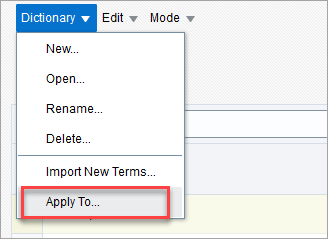
-
In the Apply Dictionary pop-up window, select the filters according to where the translations need to be applied to, then click the [Apply] button. Please see Translation Manager - Using the Filter Functionality for further details.
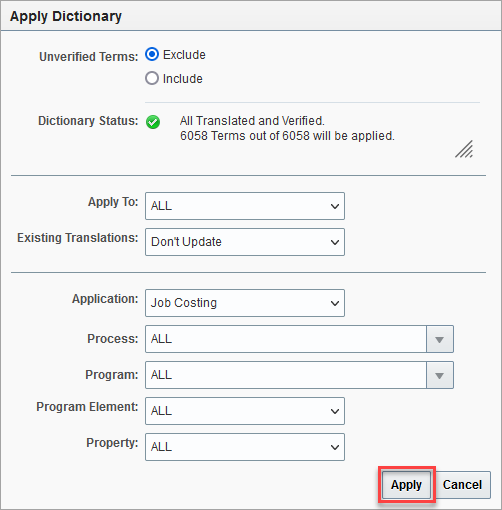
-
When the translations are finished being applied, a pop-up window will appear notifying the user that the dictionary has been successfully applied. Click [OK] to close the window.

-
Navigate to Program Mode using the Mode drop-down list on the top navigation menu.

-
In Program Mode, select a country-specific variant for the To field under the Translation section.

-
Use either the Treeview or the drop-down lists to navigate to the objects that the dictionary was applied to.
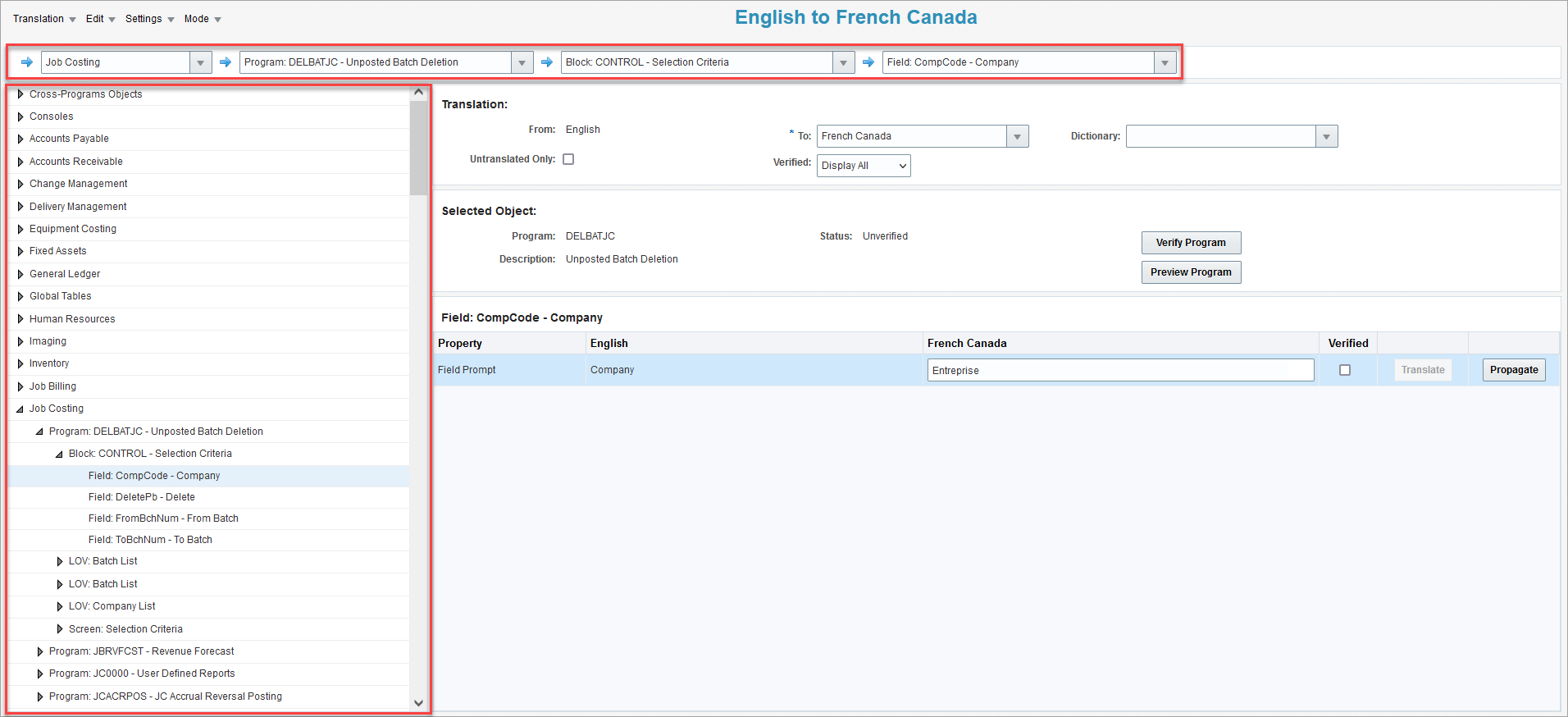
-
The applied translation will display under the Program Element section and can be modified and verified as needed.

-
Once all translations have been verified in Program Mode, the language can be installed on a selected environment. Please see Translation Manager - Publishing and Unpublishing Translations for further details.
Applying Selected Terms in the Dictionary to Program Mode
This option can be used if only a few dictionary terms need to be applied to Program Mode.
-
Once a term has been translated and verified, it can be applied to applications, programs, processes, etc. in Program Mode using the [Apply] button associated to the term.
NOTE: The [Apply] button only translates objects available in Program Mode. Message Mode, Menu Mode, and JSP Mode information is not affected.
-
In the Apply Term pop-up window, select the filters according to where the translations need to be applied to, then click the [Apply] button. Please see Translation Manager - Using the Filter Functionality for further details.

-
When the translations are finished being applied, a pop-up window will appear notifying the user that the term has been successfully applied. Click [OK] to close the window.
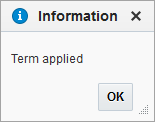
-
Repeat steps 1 to 3 to apply other terms to Program Mode objects.
-
Navigate to Program Mode to find the objects the translations have been applied to. Once all translations have been verified in Program Mode, the language can be installed on a selected environment. Please see Translation Manager - Publishing and Unpublishing Translations for further details.
Using A Dictionary in Program Mode to Translate Select Terms
This option can be used when multiple dictionaries are needed to translate terms in Program Mode.
-
Navigate to Mode > Program Mode.
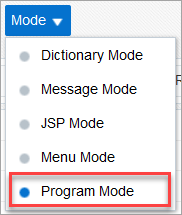
-
Under the Translation section, select the desired language for the To drop-down list. In this example, "French Canada" is selected.

-
Select the desired dictionary for the Dictionary drop-down list.
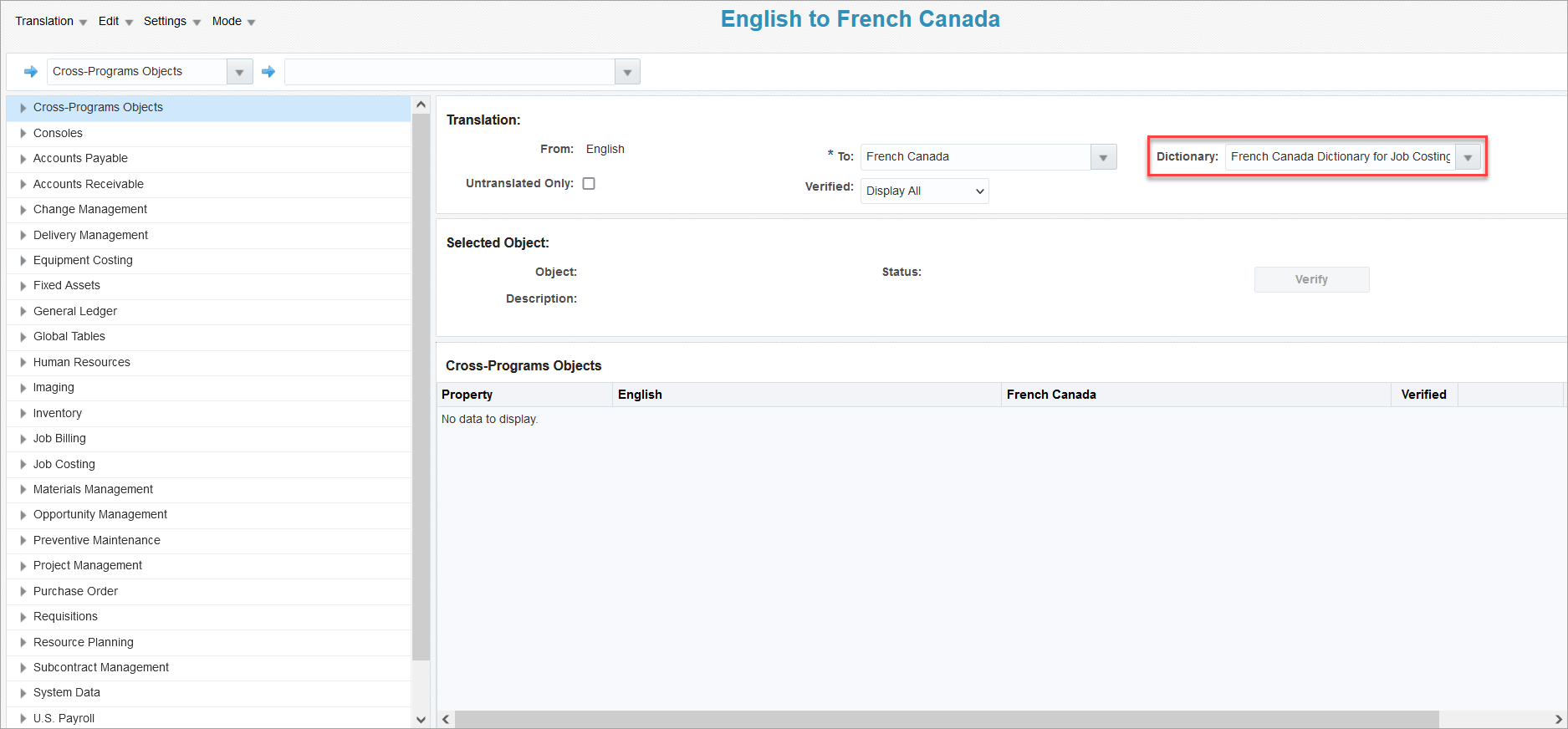
-
Use the drop-down lists on the top of the screen or the Treeview to find the desired object to translate.

-
Click on the [Translate] button to translate the object.
